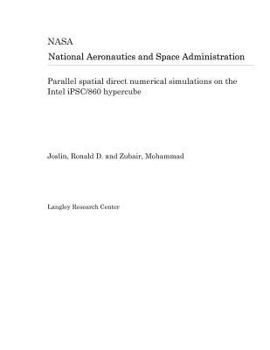Parallel spatial direct numerical simulations on the Intel iPSC/860 hypercube
The implementation and performance of a parallel spatial direct numerical simulation (PSDNS) approach on the Intel iPSC/860 hypercube is documented. The direct numerical simulation approach is used to compute spatially evolving disturbances associated with the laminar-to-turbulent transition in boundary-layer flows. The feasibility of using the PSDNS on the hypercube to perform transition studies is examined. The results indicate that the direct numerical simulation approach can effectively be parallelized on a distributed-memory parallel machine. By increasing the number of processors nearly ideal linear speedups are achieved with nonoptimized routines; slower than linear speedups are achieved with optimized (machine dependent library) routines. This slower than linear speedup results because the Fast Fourier Transform (FFT) routine dominates the computational cost and because the routine indicates less than ideal speedups. However with the machine-dependent routines the total computational cost decreases by a factor of 4 to 5 compared with standard FORTRAN routines. The computational cost increases linearly with spanwise wall-normal and streamwise grid refinements. The hypercube with 32 processors was estimated to require approximately twice the amount of Cray supercomputer single processor time to complete a comparable simulation; however it is estimated that a subgrid-scale model which reduces the required number of grid points and becomes a large-eddy simulation (PSLES) would reduce the computational cost and memory requirements by a factor of 10 over the PSDNS. This PSLES implementation would enable transition simulations on the hypercube at a reasonable computational cost. Joslin, Ronald D. and Zubair, Mohammad Langley Research Center...
Format:Paperback
Language:English
ISBN:1729395597
ISBN13:9781729395592
Release Date:January 1
Publisher:Independently Published
Length:54 Pages
Weight:0.33 lbs.
Dimensions:0.1" x 8.5" x 11.0"












